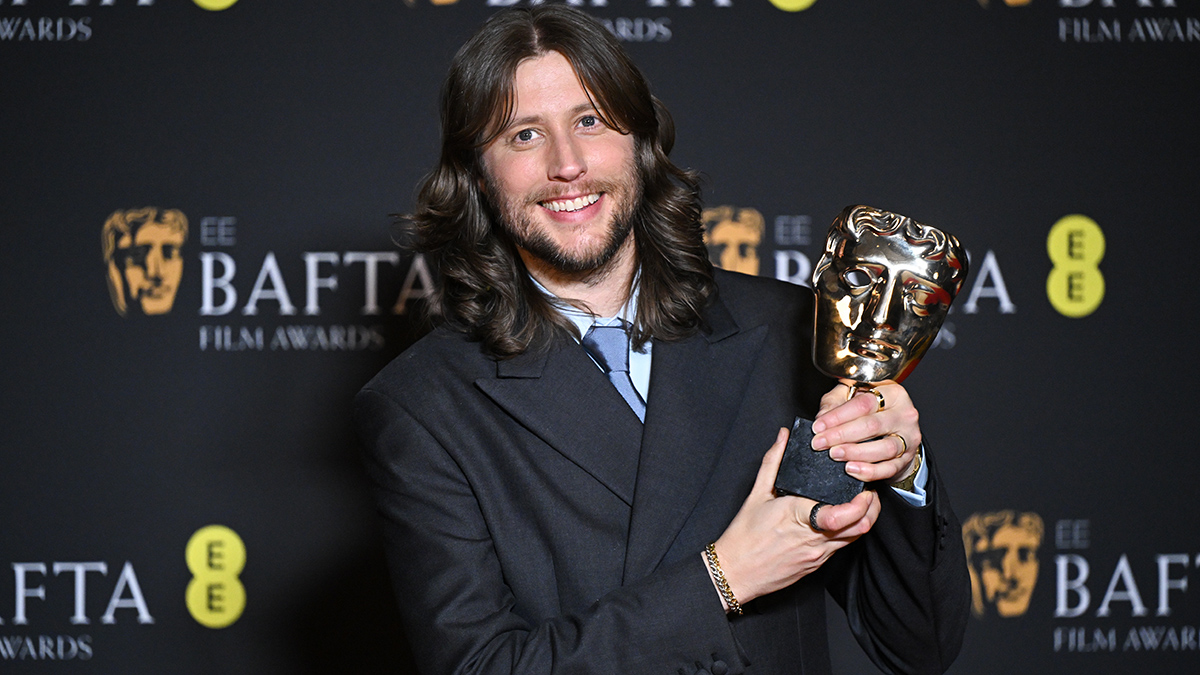“How the hell are we gonna be able to record this live?”: Oppenheimer composer Ludwig Göransson on how a synth sound was crucial when creating a key moment in the movie’s soundtrack
How a four-note bassline and simple melody was transformed into a tempo-shifting “math or science experiment”

If you watched Christopher Nolan’s Oppenheimer in the cinema, one of the things that probably struck you was the quality of not only the sound design - always an important component of the director’s films - but also the soundtrack itself. That was the work of Ludwig Göransson, who’s been discussing his work on the movie - specifically, the origins of the breathtaking Can You Hear The Music? piece - with Variety.
This was Göransson’s second project with Nolan (he also provided the score for Tenet) and the Swede reveals that, in the early stages when all he had to work with was a script, he was given pretty free rein. Nolan’s one idea, though, was to use the violin to portray Oppenheimer.
Given its ability to convey such a wide range of emotions - not to mention the fact that his wife, Serena, is a violinist - Göransson was fully onboard with this suggestion, and the couple began by spending long days recording sounds and ideas.
It was during this time, says Göransson, that inspiration struck: “After one of those days that I remember, we’re both exhausted and we’re about to pack up, and I remember sitting at the piano and just writing down this very simple melodic bassline. It has four notes. And then I just quickly put that bassline in the strings.”
Leaving this repeating bassline running, Göransson then came up with a six-note melody, which Serena recorded on the violin, followed by a counter-melody.
The next step on the journey towards Can You Hear The Music? Was taken after Göransson had been to an IMAX theatre and witnessed some visual effects that illustrated molecules swimming around.
“I felt like I needed to write some music that also had the math and science in it,” he says. “I wrote a piece, a demo called Hexatonics. I had a B minor and a C major, and if you take the tonic, the third and the fifth in those two chords, you have six notes. It’s kind of like an exercise, a mathematical exercise, and I recorded that with four violins here at my studio.”
Get the MusicRadar Newsletter
Want all the hottest music and gear news, reviews, deals, features and more, direct to your inbox? Sign up here.
To add what Göransson describes as “an element of danger” to this motif, he introduced a distorted synth sound. And, when he heard it in one of their director-composer meetings, it was this that Christopher Nolan latched onto.
“One of the first things he points out is that sound,” confirms Göransson. “His ear was immediately drawn to that sound, and he thought it was a very interesting choice of tone for this piece of music, and he pointed out that we should try to use more of it.”
Fast-forward to the moment when Göransson received his first footage from the film, which turned out to be the Can You Hear the Music? montage. This features Oppenheimer grappling with the challenge in front of him; “I always thought about this - how, when you are learning to master something, I can relate to that in music, being a student,” says Göransson.

The finished piece, which blends the two demos discussed above, features multiple tempo changes to illustrate the feeling of pieces falling into place, and an ability to do something at different speeds as you get better at it. And that synth sound is used as the lead instrument.
Recording the string parts live presented something of a challenge, says Göransson, with the musicians ultimately having to play to a click track that featured multiple tempo changes. And, in order to capture the sound of the room and add further depth and atmosphere, the sound of the synth part being played through the speakers was recorded, too.
The end result is pretty epic, but, as Göransson points out, there are actually surprisingly few parts in his DAW project. And there’s a lesson there for all of us: “instead of adding too many sounds and making it feel like you have to fill up the air with different elements, just focus on the things that really grab you the most,” he advises.



I’m the Deputy Editor of MusicRadar, having worked on the site since its launch in 2007. I previously spent eight years working on our sister magazine, Computer Music. I’ve been playing the piano, gigging in bands and failing to finish tracks at home for more than 30 years, 24 of which I’ve also spent writing about music and the ever-changing technology used to make it.
“Excels at unique modulated timbres, atonal drones and microtonal sequences that reinvent themselves each time you dare to touch the synth”: Soma Laboratories Lyra-4 review
e-instruments’ Slower is the laidback software instrument that could put your music on the fast track to success

![PRS Archon Classic and Mark Tremonti MT 15 v2: the newly redesigned tube amps offer a host of new features and tones, with the Alter Bridge guitarist's new lunchbox head [right] featuring the Overdrive channel from his MT 100 head, and there's a half-power switch, too.](https://cdn.mos.cms.futurecdn.net/FD37q5pRLCQDhCpT8y94Zi.jpg)








